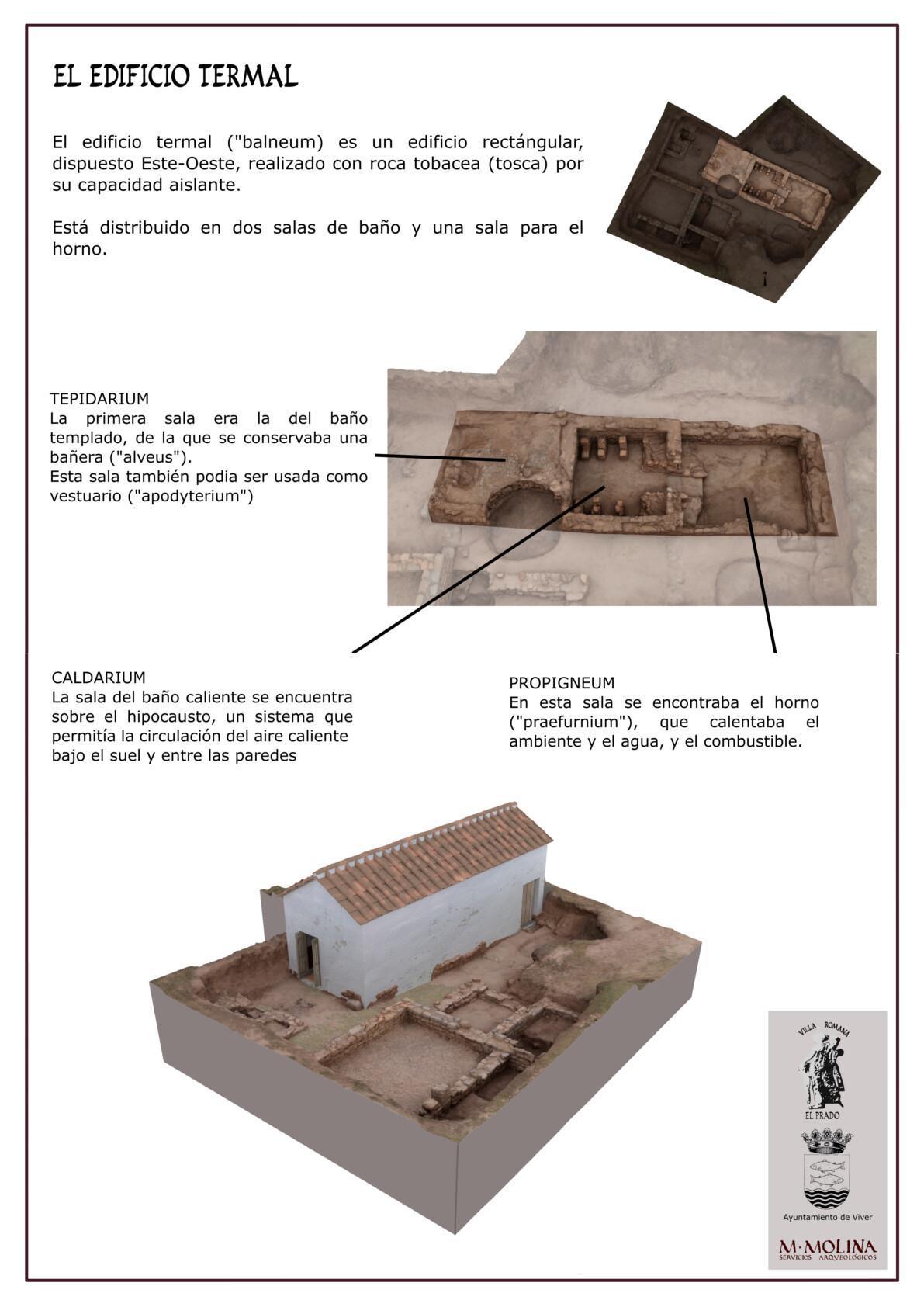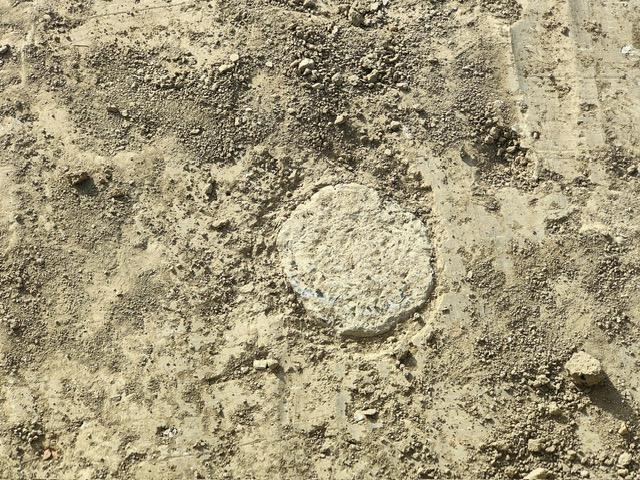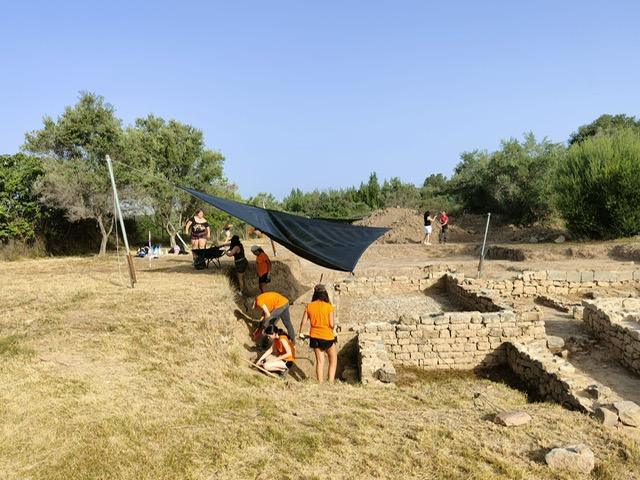
Roman Villa
Viver CS VC
The Roman villa of El Prado is located in the municipal district of Los Cabillos, to the northwest of the town centre, on the left bank of the Hurón ravine.
The history of the site
The archaeological site of ‘El Prado’ was discovered and partially excavated in 2007, during the archaeological monitoring of the installation of the power line for the evacuation of the wind farm in zone 6 of the Valencian Wind Plan.
The excavation carried out in 2007, directed by H. Fernández and A. Gómez, brought to light various structures of a Roman villa from the High Imperial period founded around the 1st century AD and abandoned in the 3rd century AD.
After the archaeological excavation, no further work was carried out on the site until the summer of 2013, when the Viver Town Council acquired the plots of land on which it was located and it became municipal property.
Shortly afterwards, in September 2013, the General Urban Development Plan of Viver was provisionally approved, and the site of ‘El Prado’ (ARQ-9) was included in the Catalogue of Protected Assets and Spaces, which was declared an Asset of Local Relevance in the category of archaeological site.
Throughout 2014, a grant was requested from the General Directorate of Heritage for the perimeter fencing of the site, which was put in place at the end of the year.
In December 2016, the ‘Project for the enhancement of the Roman villa of El Prado’ was launched, with the aim of safeguarding the excavated remains (consolidating the existing walls) and the unexcavated remains (removing the trees from the plots).
Since the summer of 2017, excavation campaigns have been carried out in the Roman villa of El Prado, organised by the Valencian Youth Institute (IVAJ) and co-financed by the Viver Town Council. In the 2023 campaign, the first column of what appears to be an atrium was found.
What to see
Although several archaeological test pits were excavated, only the so-called ‘central test pit’ was excavated, where an area of 175 m2 was excavated, allowing the documentation and identification of various structures and areas.
Inside the excavation we can see a small thermal building (balneum), with the different rooms that identify it, as well as other areas interpreted as living or working areas.



